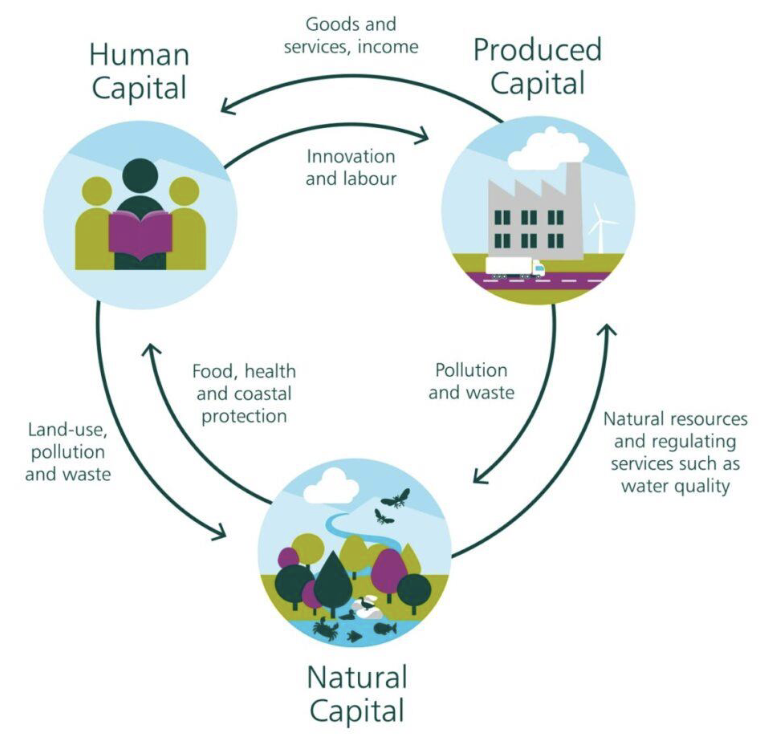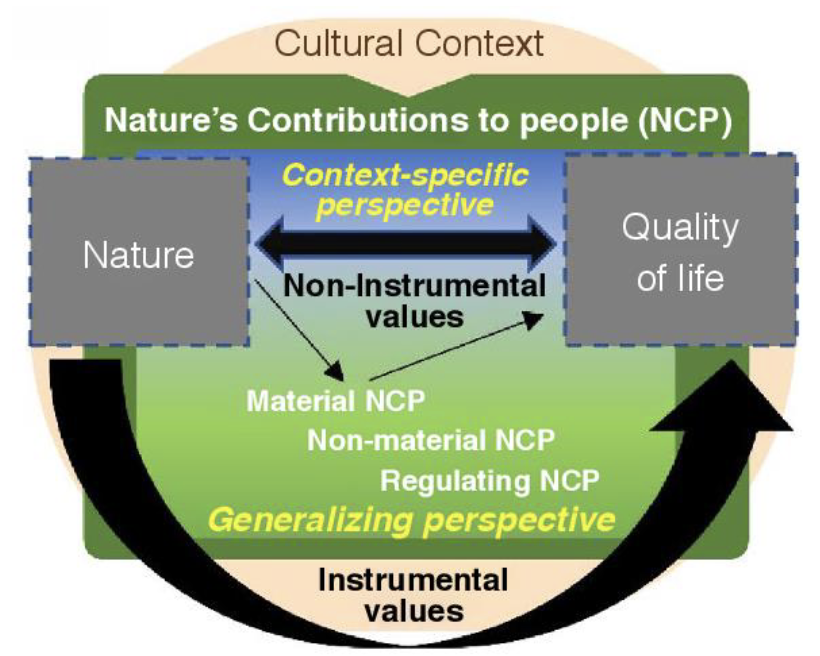Lecture 14: Ecosystem services and Nature's Contributions to People
1/15
Earn XP
Description and Tags
Gonzalez
Name | Mastery | Learn | Test | Matching | Spaced |
|---|
No study sessions yet.
16 Terms
Ecosystem services flow

The Dasgupta Review
Outlines three kinds of capital: Human, Produced, and Natural

Inclusive wealth - equation
Inclusive wealth= K+H+N
K= produced capital
H= human capital
N= natural capital
Natural capital
Stock of renewable and non-renewable natural assets that contribute to the flow of benefits (ecosystem services) to people
Four classes of ecosystem services
Provisioning
Regulating
Supporting
Cultural
Valuation approaches to ecosystem services
Biophysical - qualifying functions (i.e. tons of carbon sequestered)
Economic - monetary valuation, cost-benefit analysis
Sociocultural - participatory, relational, or intrinsic value assessments
IPBES conceptual framework

Nature’s contributions to people - IPBES

3 categories of NCPs
Material
Non-material
Regulating
The 18 classes of NCPs fall into one or more of these categories
Ecosystem Service Production Functions (ESPFs) - equation
ES=f(B*E*H)
ES= quantity of ecosystem service
B= biotic variable
E= abiotic variables
H= human inputs
Links natural capital to ecosystem service flows
Pollination service - equation
Y= Y0 + B(beta)1D-l(lambda)
Y= actual crop yield
Y0= baseline yield without wild pollinators
D= distance from natural habitat
beta, lamba = fitted parameters
Payment for Ecosystem Services (PES)
“Magic bullet”
Pay people who steward nature enough to do it well
A voluntary transaction where a well-defined ecosystem service is bought by at least one buyer from at least one provider if and only if the provider secure the provision.
PES flowchart

PES economic equations
Pi= a(alpha)*Qi
Pi= payment to landholder i
Qi= quantified ecosystem delivered to buyer (i.e. tons of carbon sequestered)
a(alpha)= price or value per unit service
Adopt conservation if Pi is greater than or equal to (Rialt - Ricon)
Rialt= revenue from alternative use (e.g. agriculture)
Ricon= revenue from conservation
Practical takeaways for PES
Target where the threat is high
Set payments to cover opportunity costs
Make benefits contingent on outcomes
Design for equity and legitimacy
Anticipate leakage
Leverage collective of hybrid models
Commodification of nature - a critique
Intrinsic, regional, cultural values lost
Nature protected only where it is profitable
Inequality is reproduced
Perverse incentives can arise